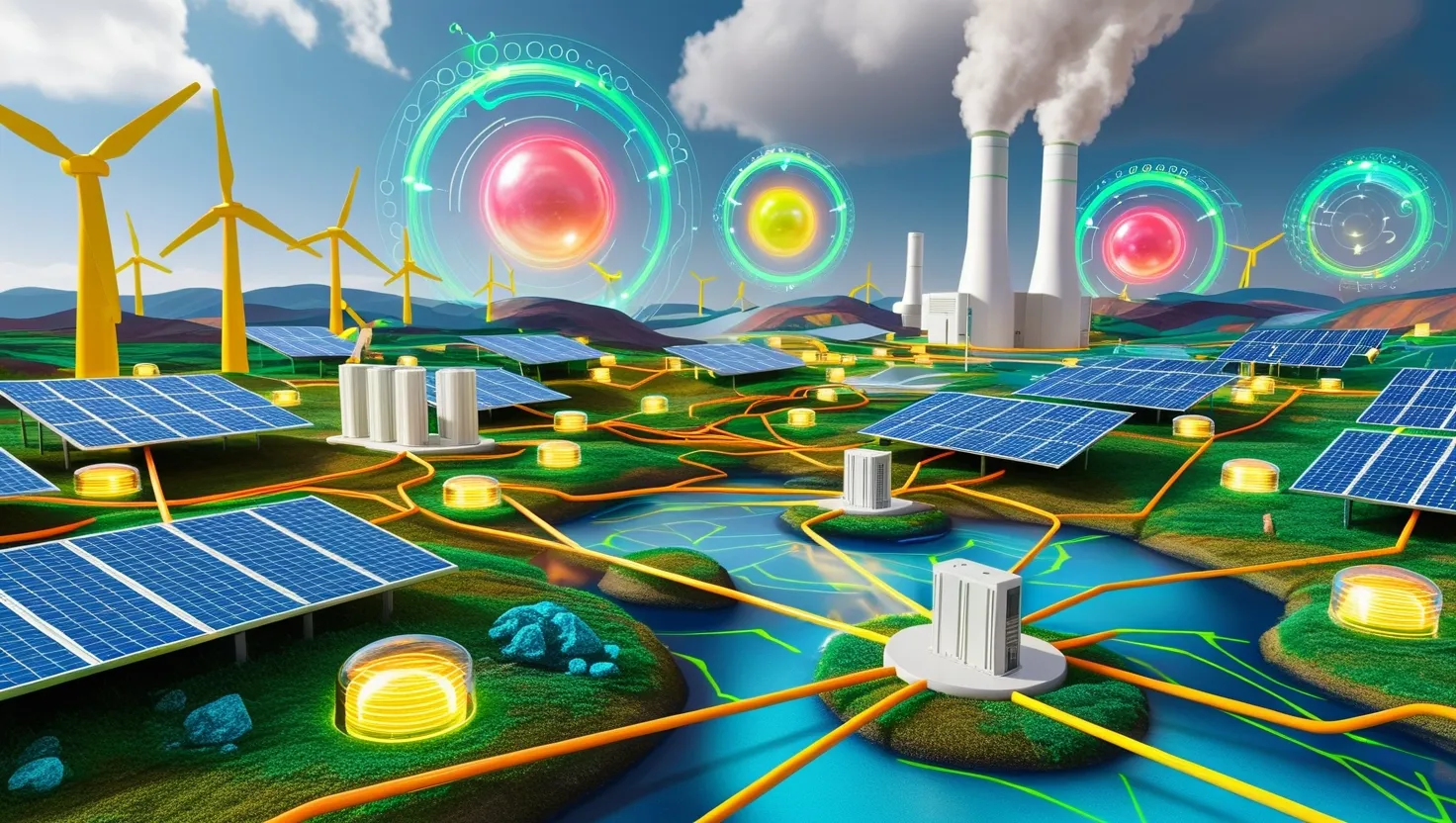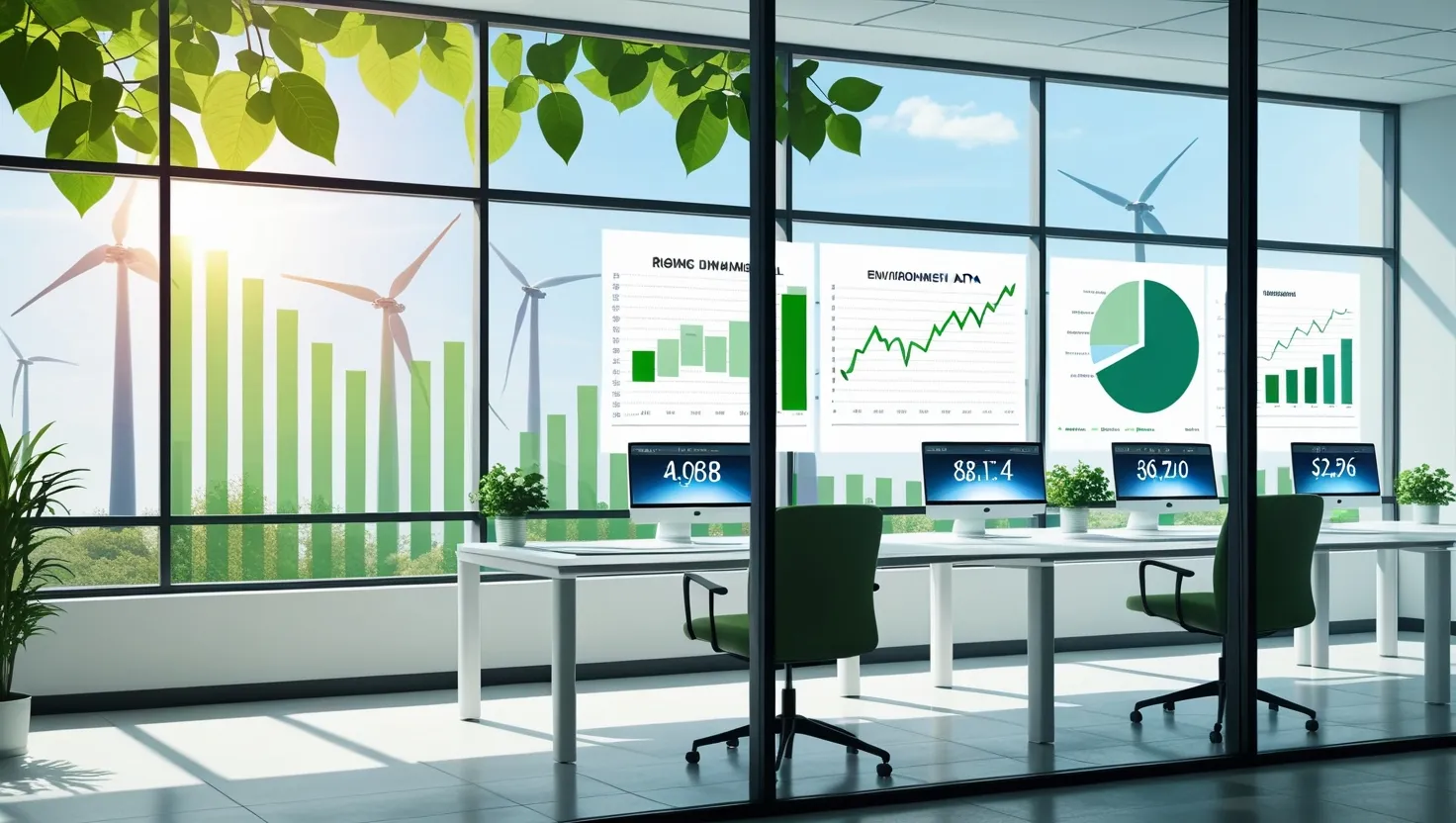As we stand at the threshold of a new era in global energy, it’s clear that the landscape is undergoing a profound transformation. The energy transitions that are reshaping our world are not just about switching from one source of energy to another; they are about redefining the very fabric of our economies, geopolitical relationships, and our battle against climate change.
The Rise of Renewable Energy
Renewable energy, once considered a niche player, has now become a significant force in the global energy market. The cost of solar and wind energy has plummeted, making them competitive with, and in many cases, cheaper than fossil fuels. This shift is having a profound impact on fossil fuel markets. Traditional energy producers are facing unprecedented challenges as demand for coal, oil, and gas begins to wane.
Imagine a world where the sun and wind are the primary sources of power. It’s a reality that is fast becoming the norm. In many regions, renewable energy is no longer just an alternative; it’s the preferred choice. This transition is driven not just by environmental concerns but also by economic pragmatism. Countries are realizing that investing in renewables can lead to significant long-term savings and job creation.
The impact on fossil fuel markets is multifaceted. On one hand, the decline in demand is forcing traditional energy companies to diversify their portfolios or risk becoming obsolete. On the other hand, this transition is opening up new economic opportunities in sectors such as construction and manufacturing, which are crucial for the installation and maintenance of renewable energy infrastructure.
Nuclear Power Resurgence
Nuclear power, often the forgotten child of the energy world, is experiencing a resurgence unlike any other. After years of being on the backburner, nuclear energy is once again being recognized for its unique strengths – it is carbon-free, reliable, and can operate 24/7.
The reliability of nuclear power is one of its most compelling attributes. Unlike solar and wind, which are intermittent energy sources, nuclear power plants can provide baseload power, ensuring a constant supply of electricity. This makes them an indispensable part of a low-carbon energy mix.
The recent geopolitical tensions, particularly the conflict in Ukraine, have highlighted the importance of energy security. Countries are reevaluating their energy policies, and nuclear power is emerging as a vital component of this strategy. France, for instance, has long been a proponent of nuclear energy, and its foresight is now being hailed as prescient.
Hydrogen Economy Development
The hydrogen economy is another frontier that is gaining significant traction. Hydrogen, when produced from renewable sources, can be a clean and versatile energy carrier. It can power vehicles, generate electricity, and even serve as a feedstock for industrial processes.
However, the development of a hydrogen economy is not without its challenges. One of the most significant hurdles is the infrastructure required to produce, transport, and store hydrogen. Currently, most hydrogen is produced from fossil fuels, which defeats the purpose of using it as a clean energy source.
Investments in green hydrogen production are on the rise, but the cost remains prohibitively high. Governments and private sector entities are working together to drive down these costs and build the necessary infrastructure. The potential rewards are substantial – a hydrogen economy could significantly reduce greenhouse gas emissions and provide a new avenue for energy storage and transport.
Energy Storage Innovations
Energy storage is the linchpin of the clean energy transition. Without efficient and cost-effective ways to store energy, the intermittency of renewable sources becomes a major obstacle. Innovations in battery technology and other energy storage solutions are addressing this challenge head-on.
Advances in lithium-ion batteries have made them more efficient and affordable. New technologies like flow batteries and solid-state batteries are also on the horizon, promising even greater improvements. These innovations are crucial for maintaining grid stability and ensuring that renewable energy can meet peak demand.
The economic implications of these innovations are far-reaching. Traditional energy producers are being forced to adapt, while new players in the energy storage sector are emerging. This shift is creating new job opportunities and driving economic growth in sectors that were previously underdeveloped.
Decentralized Energy Systems and Microgrids
In developing nations, decentralized energy systems and microgrids are revolutionizing the way energy is accessed and distributed. These systems allow communities to generate their own energy, often using local renewable resources.
Decentralized energy systems are particularly beneficial in areas where traditional grid infrastructure is lacking. They provide reliable and affordable energy, which is essential for economic development and improving living standards. Microgrids can also serve as a backup during grid outages, ensuring continuous power supply.
The role of government policies and international cooperation in driving these transitions cannot be overstated. Policies that incentivize the adoption of clean energy technologies and provide regulatory frameworks for their integration are crucial. International cooperation is also vital, as global challenges require global solutions.
Economic Implications and Geopolitical Shifts
The economic implications of these energy transitions are profound. Traditional energy producers are facing significant challenges as their markets shrink. However, this decline is offset by the growth in new sectors such as renewable energy, energy storage, and hydrogen production.
Emerging green technology sectors are creating new economic opportunities and driving job creation. According to recent studies, the clean energy transition is expected to reduce future energy bills and maintain GDP growth in both advanced and developing economies.
Geopolitically, these transitions are reshaping relationships between nations. Countries that were once heavily reliant on imported fossil fuels are now looking to diversify their energy sources. This shift is reducing the influence of traditional energy exporters and creating new alliances based on clean energy cooperation.
The Role of Government Policies and Private Sector Investments
Government policies are the catalysts for these energy transitions. Policies that accelerate the transition to clean energy, such as tax incentives, subsidies, and regulatory frameworks, are essential for driving investment and adoption.
Private sector investments are also crucial. Companies are increasingly recognizing the economic benefits of transitioning to clean energy. Over 1,000 companies worldwide have called for governments to set policies that accelerate this transition, understanding that it is in their economic best interest.
Conclusion
The global energy landscape is undergoing a seismic shift. The rise of renewable energy, the resurgence of nuclear power, the development of the hydrogen economy, innovations in energy storage, and the proliferation of decentralized energy systems are all contributing to this transformation.
These transitions are not just about energy; they are about redefining our economies, our geopolitical relationships, and our fight against climate change. As we move forward, it is clear that the future of energy will be cleaner, more reliable, and more decentralized. The question is no longer if these transitions will happen, but how quickly and effectively we can make them a reality.






